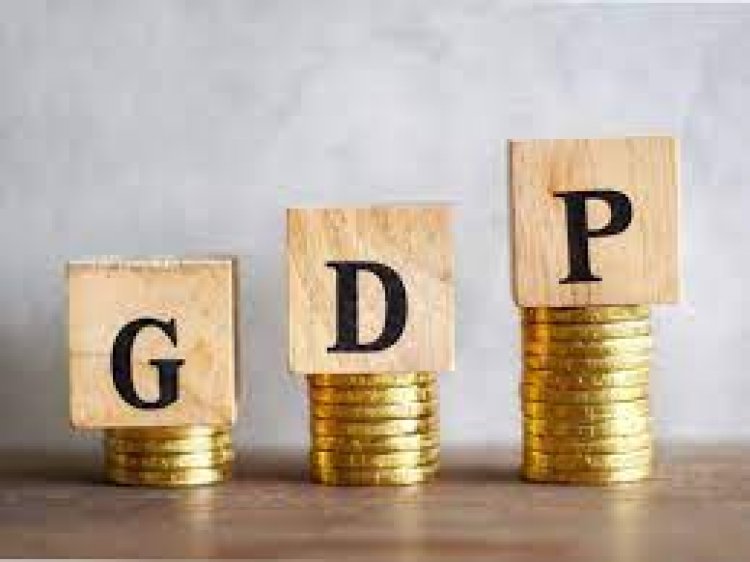Expert Analyses: GDP at 4.4% In Q3; Fy23 Growth at 7 %
STORIES, ANALYSES, EXPERT VIEWS

The Indian economy has started to slow due to a contraction in the manufacturing sector and weakening demand. Data shared by the Ministry of Statistics and Programme Implementation Tuesday showed in the third quarter of this financial year (October-December), real GDP growth was at 4.4 per cent — in line with the Reserve Bank of India’s forecast. The growth in the second quarter (July-Sept 2022) was higher at 6.3 per cent. The slowdown looks starker when compared with the same quarter a year ago when it had clocked 11.2 per cent.
GDP growth in this fiscal at 7 per cent: The National Statistical Office, which came out with the second advance estimate of national income for 2022- 23, however, projected real GDP growth in this fiscal at 7 per cent — slightly higher than the RBI’s projection of 6.8 per cent — but in lockstep with the first advance estimate that came out on January 6 and was worked into the calculations for budget 2023-24.
Growth for 2021-22 revised upwards to 9.1%: The data also stated that the economic growth for 2021-22 has been revised upwards to 9.1 per cent from 8.7 per cent earlier.
Sector wise growth
The data suggests that manufacturing sector contracted by 1.1 per cent over the previous quarter when it had contracted 3.6 per cent. The farm sector recorded a growth of 3.7 per cent in Q3 as against 2.4 per cent in Q2.
The mining sector surged to 3.7 per cent in Q3 as compared to a contraction of 0.4 per cent in the previous quarter. Electricity and construction sectors witnessed an increase of 8.2 per cent and 8.4 per cent respectively during Q3 as against 6 per cent and 5.8 per cent respectively in Q2.
Contact-intensive sector like hotels and transport declined sharply to 9.7 per cent as against 15.6 per cent in Q2. Real estate grew at 5.8 per cent as compared to 7.1 per cent in Q2. Meanwhile, defence sector grew by 2 per cent in the October-December quarter as against 5.6 per cent in July-September quarter.
Causes for lower GDP growth: Lower GDP growth, according to economists, can be attributed to aggressive rate hikes by the RBI in order to tame the high inflation levels.
In addition to these factors, the slowdown in exports and consumer demand has also contributed in bringing down the numbers. The dent in consumer demand can be linked with the bullish rate hikes by the RBI to bring down inflation in the past few months. Meanwhile, slowdown in external demand could be a consequence of the rate hikes by major central banks around the
Going ahead, the Indian economy is expected to grow at 7 per cent in FY23. New Delhi also revised the economic growth for 2021-22 upwards to 9.1 per cent from 8.7 per cent earlier.
Experts on India’s slowing growth rate
According to Soumya Kanti Ghosh, Group Chief Economic Adviser, State Bank of India, based on the FY23 yearly numbers, Q4 GDP growth should be coming around 5.1%.
Sonal Varma, Aurodeep Nandi, Research Analysts at Nomura believes “India’s growth cycle has peaked, and a combination of weaker global growth and tight domestic and global financial conditions could further impair the growth drivers viz. exports, investment and discretionary consumption. We forecast GDP growth to moderate from 6.7% y-o-y expected in FY23 to 5.3% in FY24. We also see downside risk to our view of a growth recovery in FY25 (6.9%).”
According to Abheek Barua, Chief Economist at HDFC Bank, for the full year, the FY23 GDP estimate is “unchanged at 7.0%, which pegs Q4 GDP growth at 5.1% (computed). For now, we are holding onto our FY23 GDP growth estimate at 6.8-7.0% and 5.8-6.0% for FY24.”
Rajani Sinha, Chief Economist, CareEdge says “the slowdown in growth compared with the second quarter was on account of normalisation of base and a contraction in the manufacturing sector’s output. However, sequential improvement in Q3 over Q2 signals the economy’s resilience despite challenging global economic environment.
"As the external demand conditions remain weak, it is critical that domestic demand should accelerate. Improving rural demand and rising rural wages are the positive developments for aggregate demand.”
Rumki Majumdar, Economist, Deloitte India remains “cautiously optimistic even as there are significant risks to growth. Private consumption spending was the biggest contributor. However, sustained growth in consumer spending is a concern which has led to hesitation amongst business to increase private investments.”
Suvodeep Rakshit, Senior Economist at Kotak Institutional Equities says “there is some amount of sluggishness is if you look at the consumption growth, which has been at around 2% and obviously the government expenditure has been negative. Obviously, a good part is that investment growth is quite decent….But, if you look at the FY23 growth number of 7%, I think that could be a bit of a stretch…”
Dipti Deshpande, Principal Economist, CRISIL says “the global demand slowdown — particularly for goods — had already begun to hurt India’s export and industrial growth in the second quarter. On top of this, the third quarter also reflected waning momentum in domestic consumption demand, possibly coming from sectors that were laggards in catching up post the pandemic and as a result had seen a surge in recent quarters.
"Some of these factors will continue to be a drag on growth going into next fiscal. Our GDP growth estimate of 6% for next fiscal primarily accounts for the impact of slower global growth and higher interest rates biting into growth for some interest rate sensitive sectors..”
















